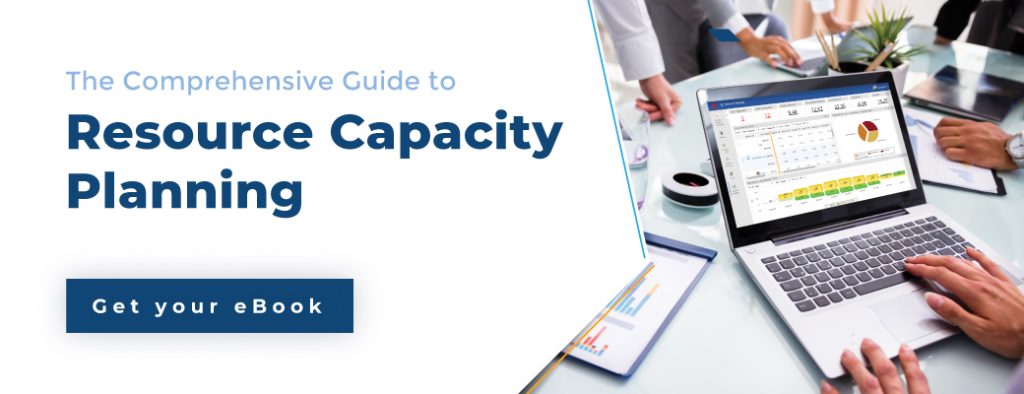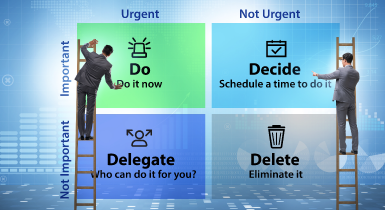Talent management plays a vital role while formulating business strategies, simply because it manages your company’s most important assets—its people. It is one of the organization’s best practices that give companies a competitive edge to sustain the volatile market and remain progressive.
A recent study estimates that by 2030, 85 million job positions will remain unfulfilled due to the lack of unskilled employees. Talent management helps the organization prepare a future-ready and skilled workforce. It not only improves team productivity and employee satisfaction but also helps in talent retention. Therefore, companies should make an effort to effectively manage their employees to develop their skills and capabilities for the long haul.
This blog covers the essential aspects of talent management. Before delving deep, let us get the basics right and start with the definition.
What is talent management?
Talent management is the process of managing resources to help them accomplish their career objectives. It is an integral part of the HR process that allows an organization to acquire, manage, develop, and retain critical resources.
Talent management systems focus on managing resources by tracking talent acquisition, employee engagement, performance, and development.
Resource management software is instrumental in simplifying talent management processes that mutually benefits the organization and its workforce.
Why is talent management important?
Every organization strives to retain the best and the most talented people to improve business efficiency and boost ROI. Similarly, employees also look for enriching work experience, adequate business exposure, and career developing opportunities. Talent management is a function of the HR division that helps align the organization’s long-term goals with employee aspirations.
Good talent management practice also minimizes unplanned attrition. Many successful organizations systematically invest in employee engagement through meaningful work, goal setting, transparent communication, and timely reward & recognition.
Empowering key resources with additional responsibilities and helping realize their true potential can create wonders for the success of any firm.
Modern resource management helps streamline the talent management process in many ways. It is not just limited to managing team members across projects. It also plays a vital role in improving operational efficiency and revenue by retaining the key resources.
Benefits of Talent Management:
The advantages of talent management are substantial. Let’s look at how resource management supports talent management and the business benefits associated with it
Timely availability of resources for projects
As the project demands change from time to time, resource planning to fulfill ad-hoc requirements can be daunting. Resource management tool provides complete visibility into resource profiles and captures details like experience, skills, qualifications, cost, and availability.
Employees can validate skills and competencies from time to time by their supervisor before updating them on the system. In this manner, organizations can maintain a skill inventory equipped for current and future projects. It helps the organization identify the right person for suitable project vacancies at the right time and cost. Also, allocating resources considering their skills and interests motivates them to stay productive and ensures timely delivery of projects.
Improve employee engagement and productivity
One of the fundamentals of the talent management process is to identify and nurture employee skills. Allocating over/underskilled resources to projects can lead to employee burnout, disengagement, and schedule overruns. So, enterprises can use workforce planning tools to schedule team members to activities based on their abilities and interests. It has a significant impact on employee motivation and productivity.
According to Gallup, “utilizing the skills and strengths of employees regularly improves their engagement by six times.”
Providing adequate training opportunities for reskilling or building new skills helps maintain their Individual Development Plan or IDP. Training new skills also ensures that resources ending up on the bench are billable as soon as they are rolled off from projects.
Enable succession planning for critical positions
Succession planning is a critical process of talent management that helps create a skilled workforce capable of filling leadership and other critical roles as the business grows, changes, or develops. During business expansion or management turnover, succession planning ensures that productivity and employee morale isn’t affected.
Training and upskilling measures are a part of the regular succession plan. However, when it comes to succession planning for multi-skilled resources, these measures are not enough.
Since the multi-skilled team member’s role will need distribution among several employees, it could substantially spike resourcing costs. A workforce planning and management tool provides complete visibility of resources across geographical barriers. It helps distribute work among multiple people from low-cost locations. Thus, organizations can avoid a single point of failure if a critical resource leaves the organization without a budget overrun.
Allow multi skill-building through job rotation
Limited and monotonous repetitive work can cause boredom and a feeling of career stagnation for most employees. Not exposing them to various roles and activities hinders employees’ career objectives resulting in lower morale, productivity, and unplanned attrition.
According to Gartner,” lack of career development opportunities leads to 40% attrition in organizations worldwide.”
Skill building and developing is one of the significant outcomes of talent management. Managers can implement a job rotation strategy that helps team members diversify their skillsets. Workforce management solutions capture their competencies and enable the timely allocation of resources to the right job. Encouraging employees to build multiple secondary skills improves employee motivation and also helps enhance their billability.
Enable strategic hiring
Strategic hiring is a critical initiative of talent management that aligns hiring and onboarding with your company’s future vision. It focuses on long-term goals and considers future skills that your employees will need to perform at a high level. Hence, one cannot take on the spur decisions to fulfill strategic business goals as it can compromise quality and prove to be very costly.
Enterprises must have visibility into the future and pipeline projects to make informed hiring decisions. Resource capacity planning helps you identify the skill gap in advance. It helps avoid last-minute scuffle for a competent workforce and hire appropriate skill sets to meet future work demands. Depending on the scope and duration of the projects, you can hire a permanent or contingent workforce.
Enhance Employee Retention
In a highly competitive and volatile market, developing and maintaining a skilled resource pool is one of their primary business objectives for sustainability. Employee turnover costs are high that adversely affects the bottom line.
A study by SHRM reveals that “the average hiring cost and lead-time are $4129 and 42 days, respectively“.
The price of employee turnover also includes soft costs such as decreased productivity, reduced engagement, training costs, and cultural impact. Employee retention is a vital component of talent management and includes hiring the right candidates, employee benefits, training, and development opportunities. If turnover is inevitable, it also includes succession planning for business continuity.
Improve client satisfaction
Studies have shown that companies with superior customer experience have 1.5 times more engaged employees compared to others. Talent management improves employee experience that has a direct impact on client satisfaction and higher ROI. It prepares them to achieve the business’s strategic goals, which increases client satisfaction and business performance.
Retaining and developing talent helps them realize the business values of how to manage their clients effectively. Talent management also facilitates business acumen and knowledge management that substantially improves client relationships. Throughout the project life cycle, a consistent client approach establishes a robust client management process that aligns with the sales and delivery team.
Helps Build Teams as per Personalities
Understanding how people work and what motivates them can make project deliveries successful. If the management takes aggressive risks, one can get many projects started, but the delivery team will struggle to complete them on time. At the same time, if the leadership team is detail-oriented, there will be no innovation culture.
One needs a combination of different types of employees as per their role. Talent management processes can make use of established personality tests during hiring or job rotation of employees. One of such personal assessment tools is DISC which helps improve communication, teamwork, and productivity at the workplace.
DISC is an acronym and the letters D, I, S and C stand for the four DISC styles: D – Dominance; I- Influence; S – Steadiness C- Conscientiousness. It helps assign roles based on the personality of the resources.
If the job content is interesting as per your interest and personality, you are likely to succeed in your role. A good talent management process can ensure this kind of best practice as a part of ongoing HR activities.
Conclusion
In a nutshell, talent management is essential to build a stable workforce for any business. It looks into the development of the organization as a whole. With new job opportunities coming up, developing staff potential within the company is essential for business profitability and sustainability.
Employees leave an organization if their job becomes monotonous or the learning activities stop over time. Talent management focuses on job rotation and encourages the workforce to pick up new skills as per market demand. It keeps them engaged, motivated and enhances employee loyalty.
The Saviom Solution
SAVIOM without a doubt has become the market leader in offering the most powerful and configurable Enterprise Resource Management Solution. Having more than 20 years of experience, this Australian-based MNC has a global presence across more than 50 countries and an esteemed client list of over 100 customers, helping them achieve their business goals. SAVIOM also has products for project portfolio management, professional service automation, and workforce planning software which can be easily customized as per business requirements.
Please get in touch with us to discuss your business challenges and significantly reduce project resource costs, increase billable utilization, and more!
















